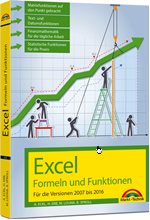Microsoft released early December 2020 the first version of the LAMBDA function in Excel. This new function allows you to define your own re-usable custom functions by only using the Excel’s formula language. In the past, custom functions could only be implemented by using a programming language such as VBA or JavaScript. At the time, I wrote this article (12/22/2020), the LAMBDA function is only available for Office Insiders. Anyone can join the Office Insider Program, please see here for more information on that.
The new function LAMBDA will be in my opinion a game changer and I think that the Excel team is not exaggerating, if they are talking about that LAMBDA will revolutionize how you build formulas in Excel.

I started blogging about the LAMBDA function since its release and created eleven custom array related functions until now. I am mainly writing my posts in German, but the last days I noticed a considerable increase of English-speaking readers. Online translators are nowadays doing a pretty good job when it comes to translate text, but they mostly fail when it comes to translate Excel formulas. That makes it more difficult for English-speaking people to understand the German formulas. Therefore, I am writing this article in English with a summary and short explanation of all my custom functions created so far.
As you probably know, nothing is static in Excel formulas. Often, there may be a way to improve it. So, if you find a better solution for one or more formulas, please let me know and leave a comment here.




